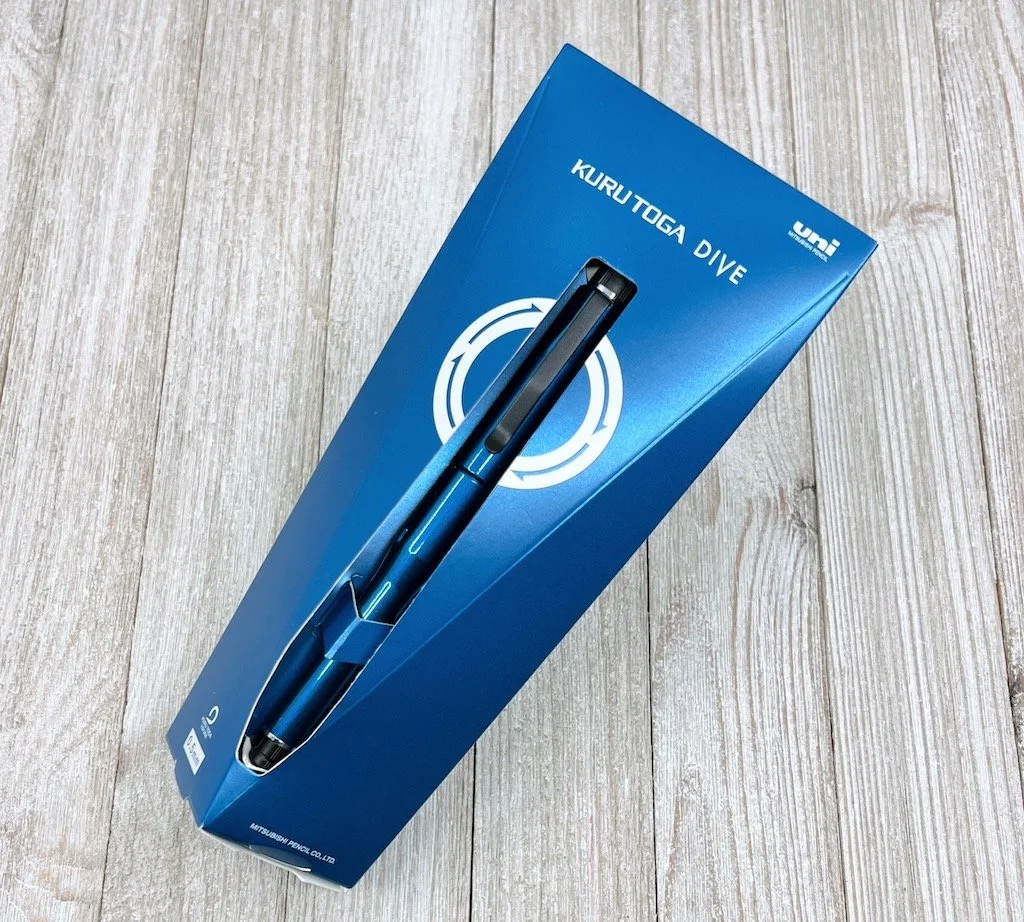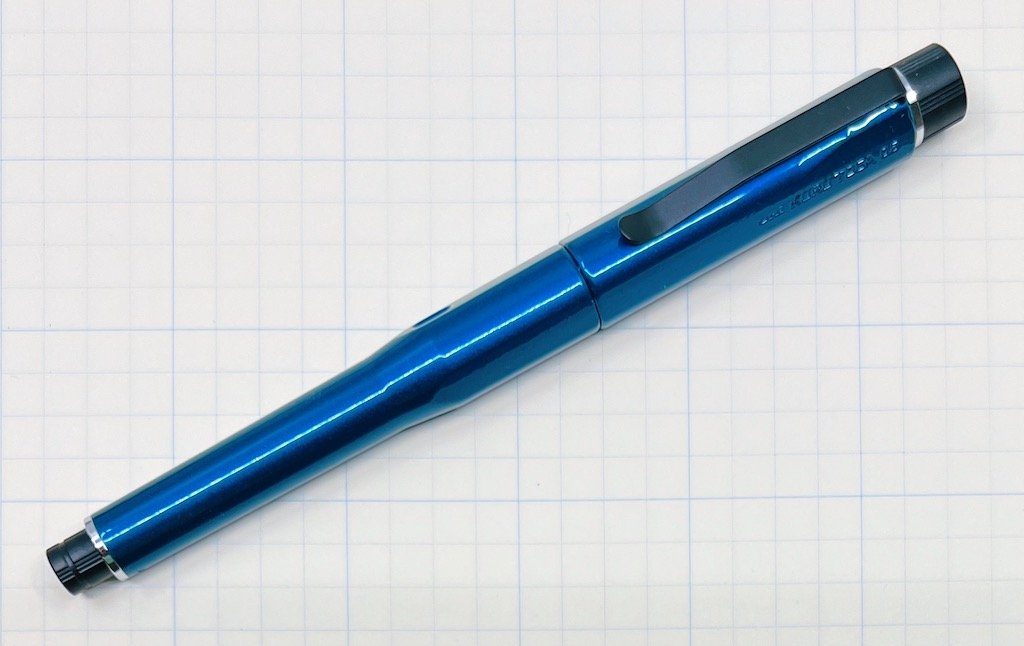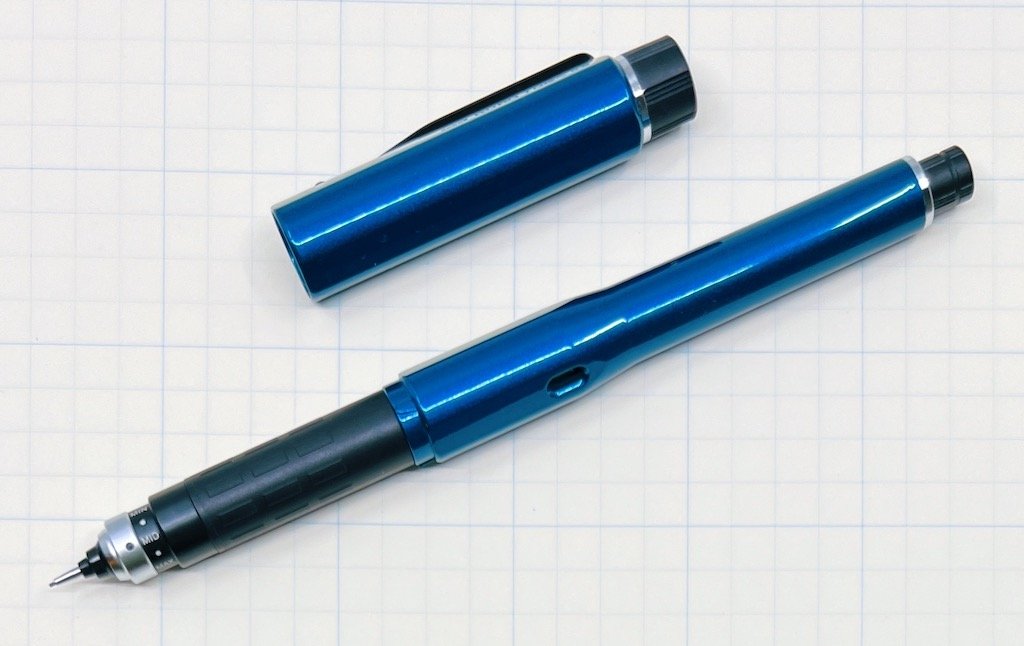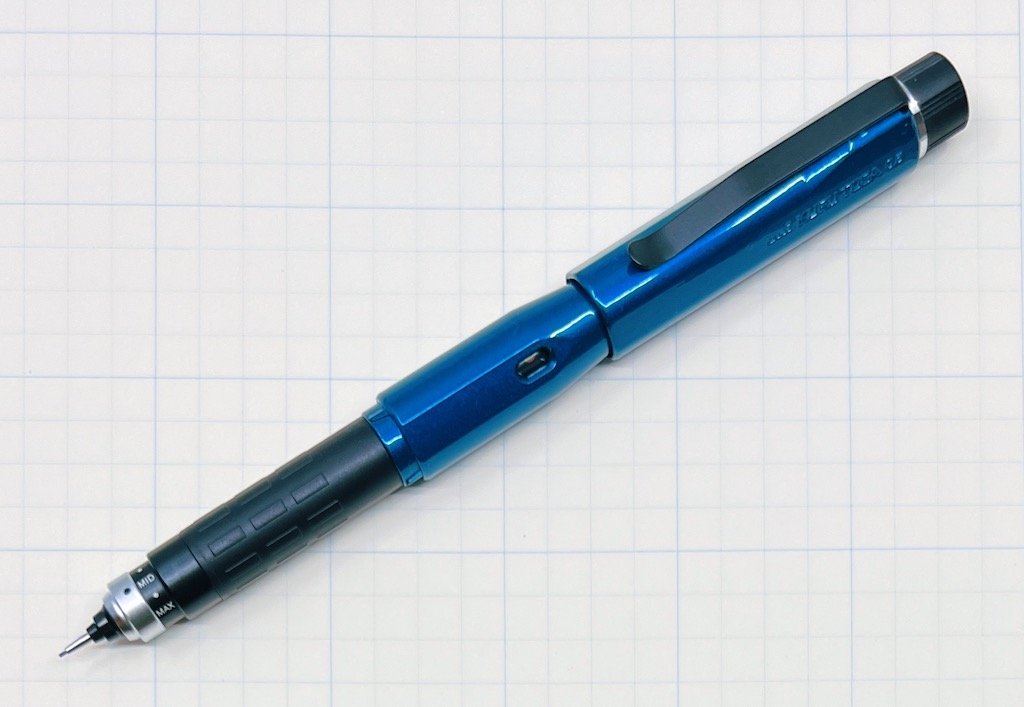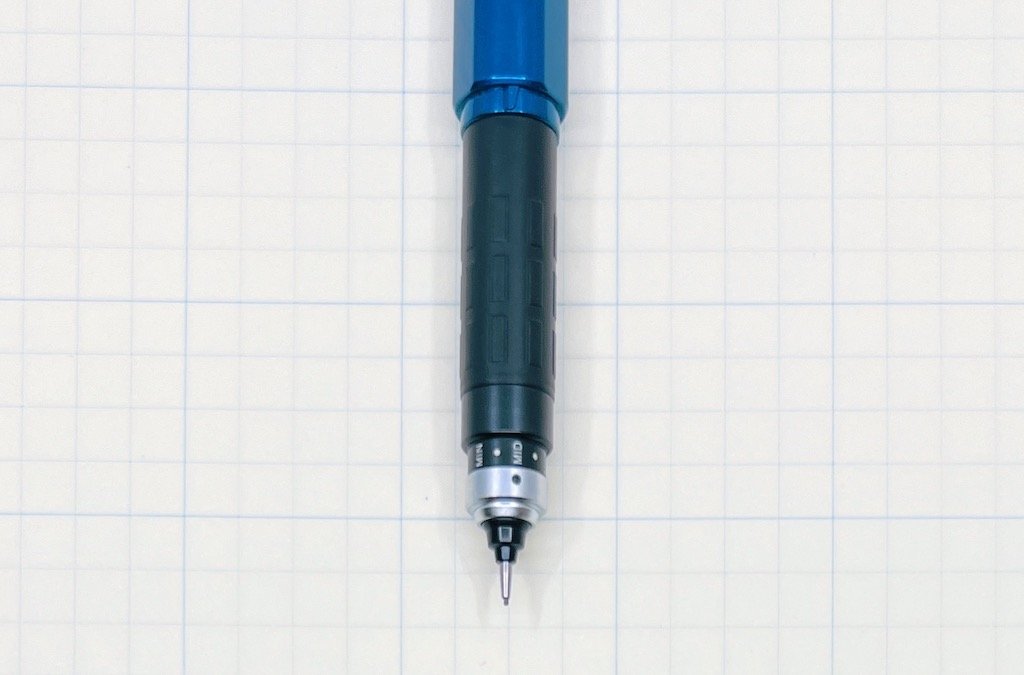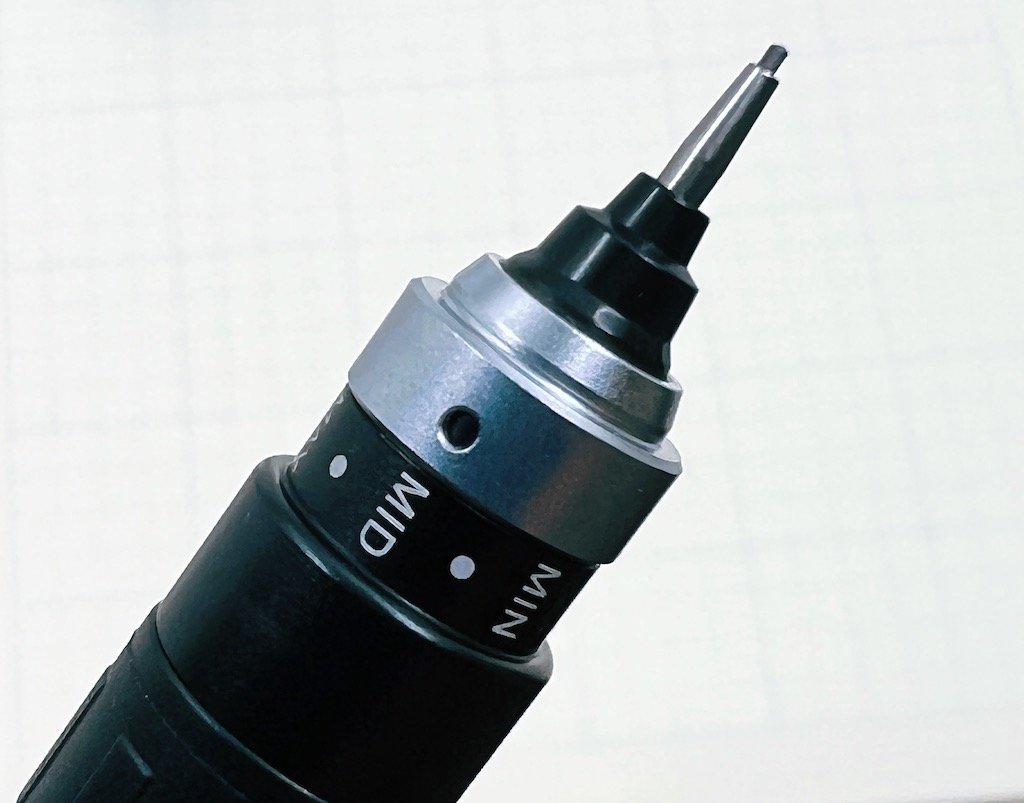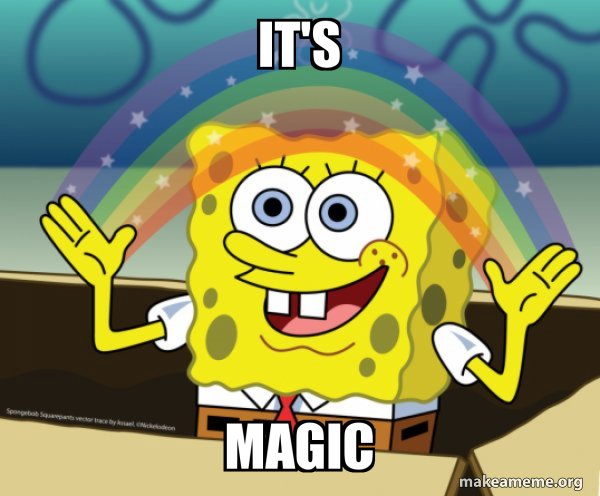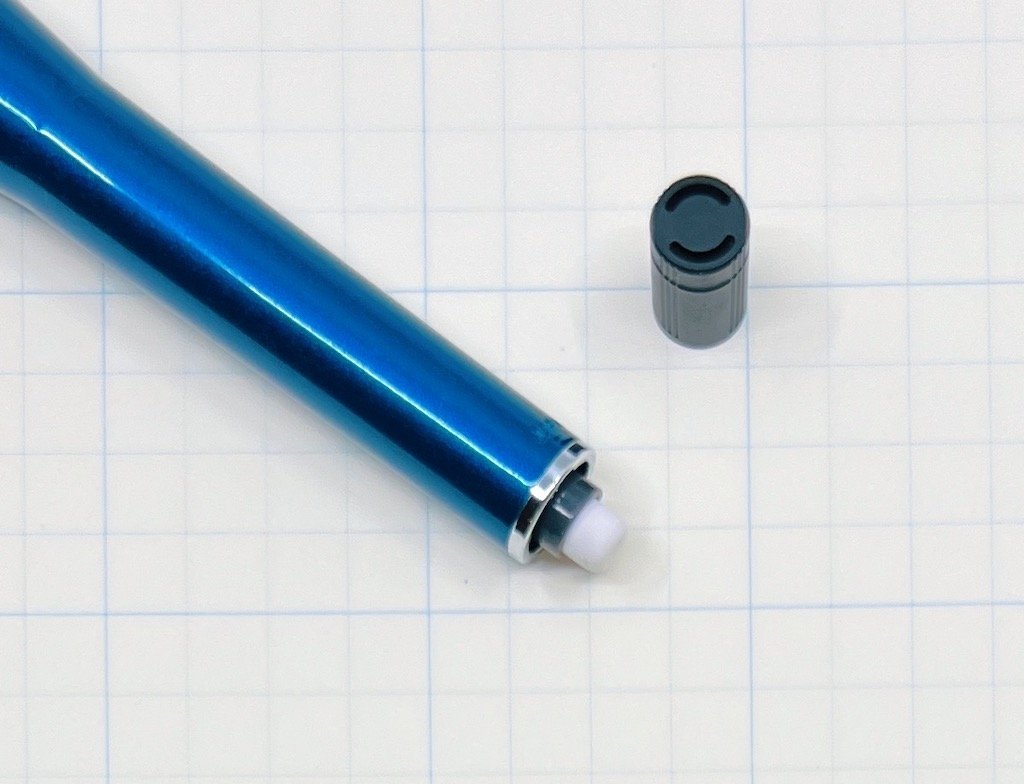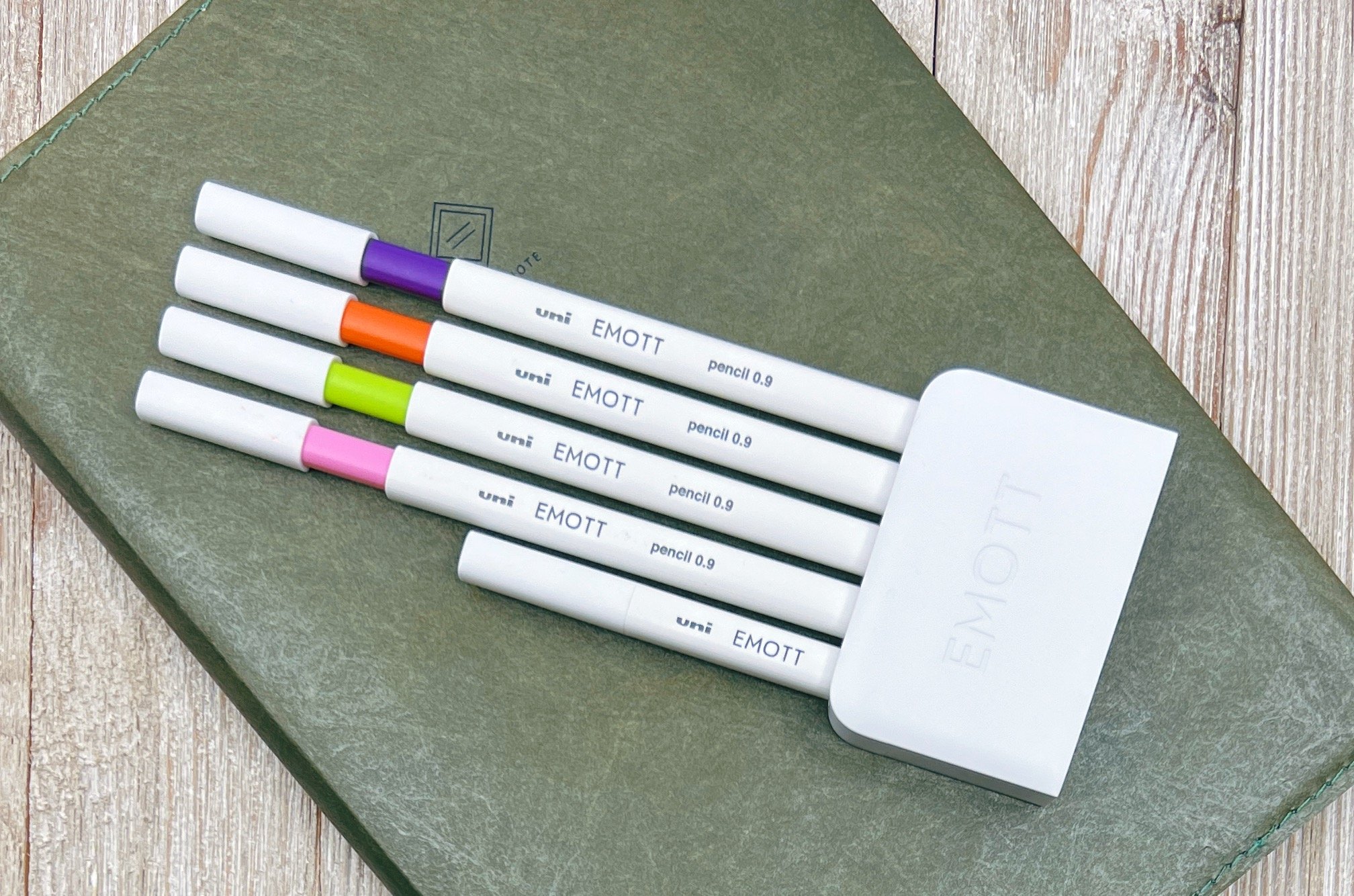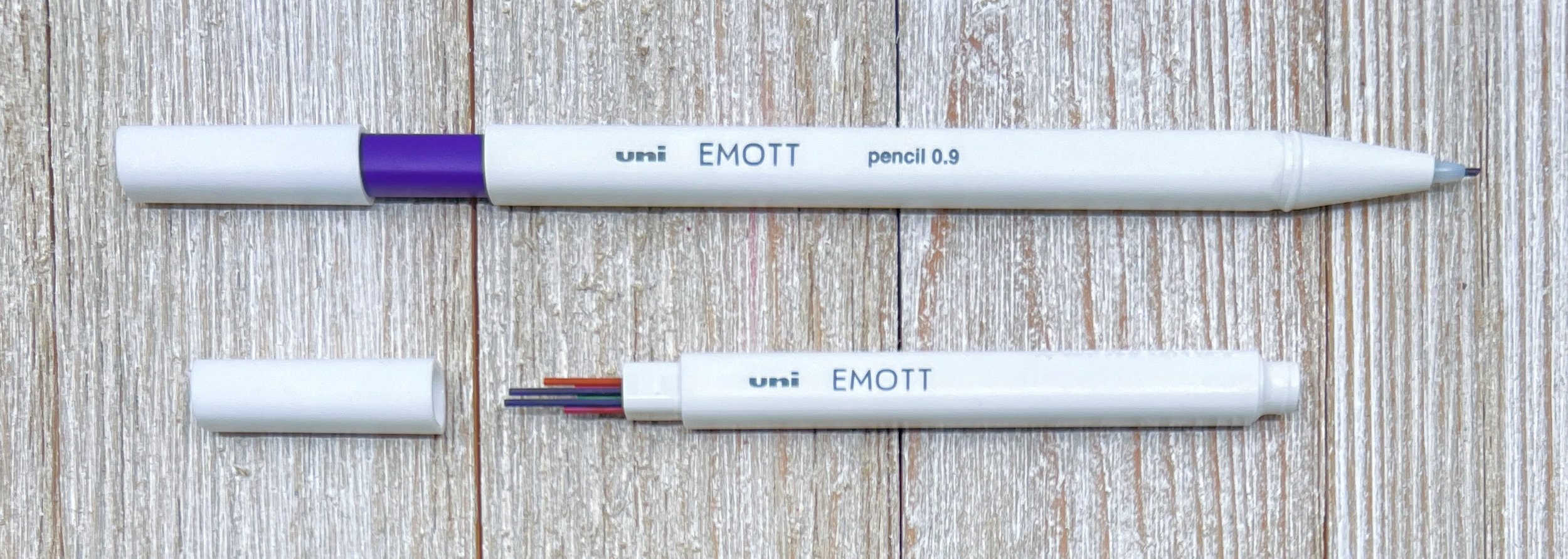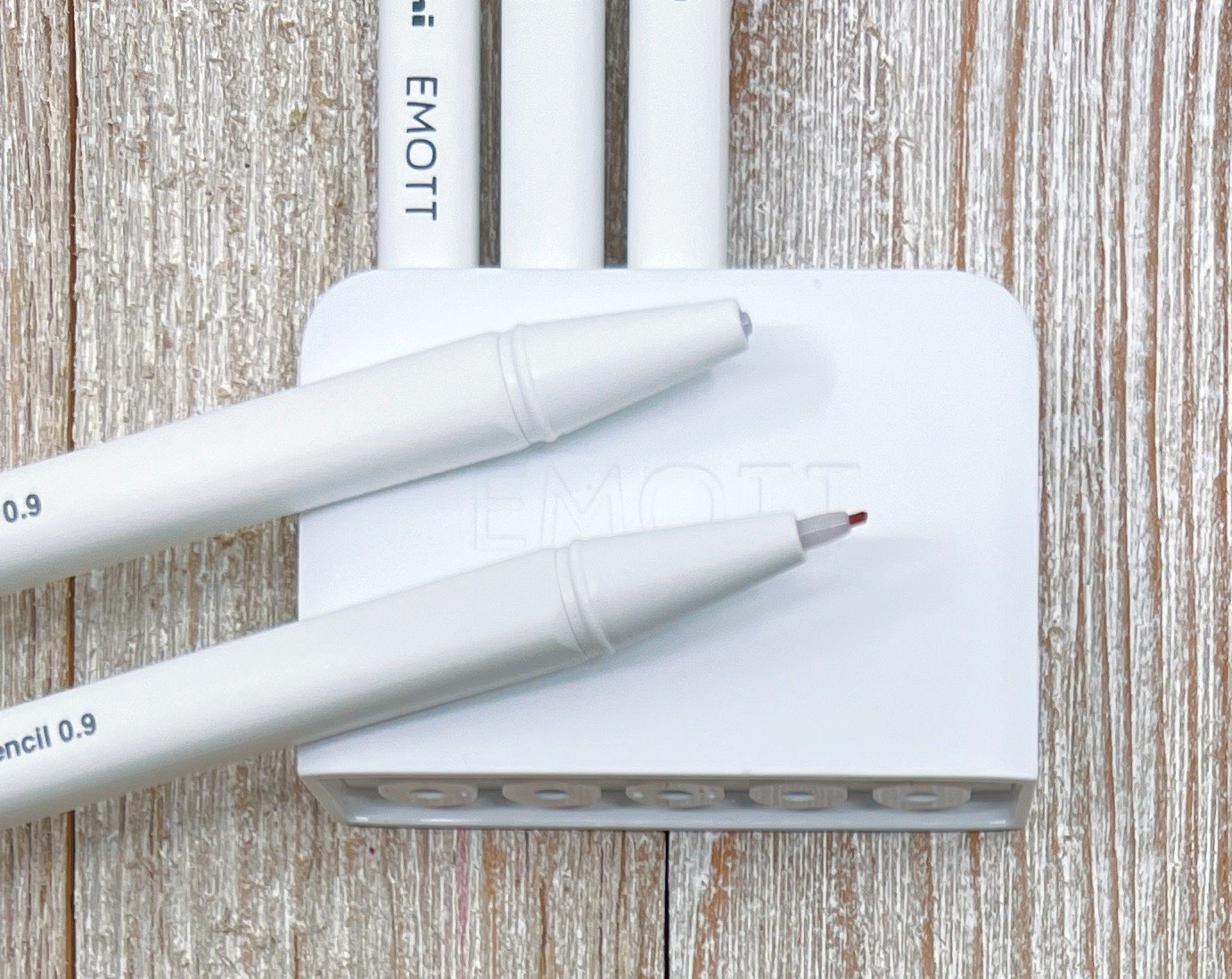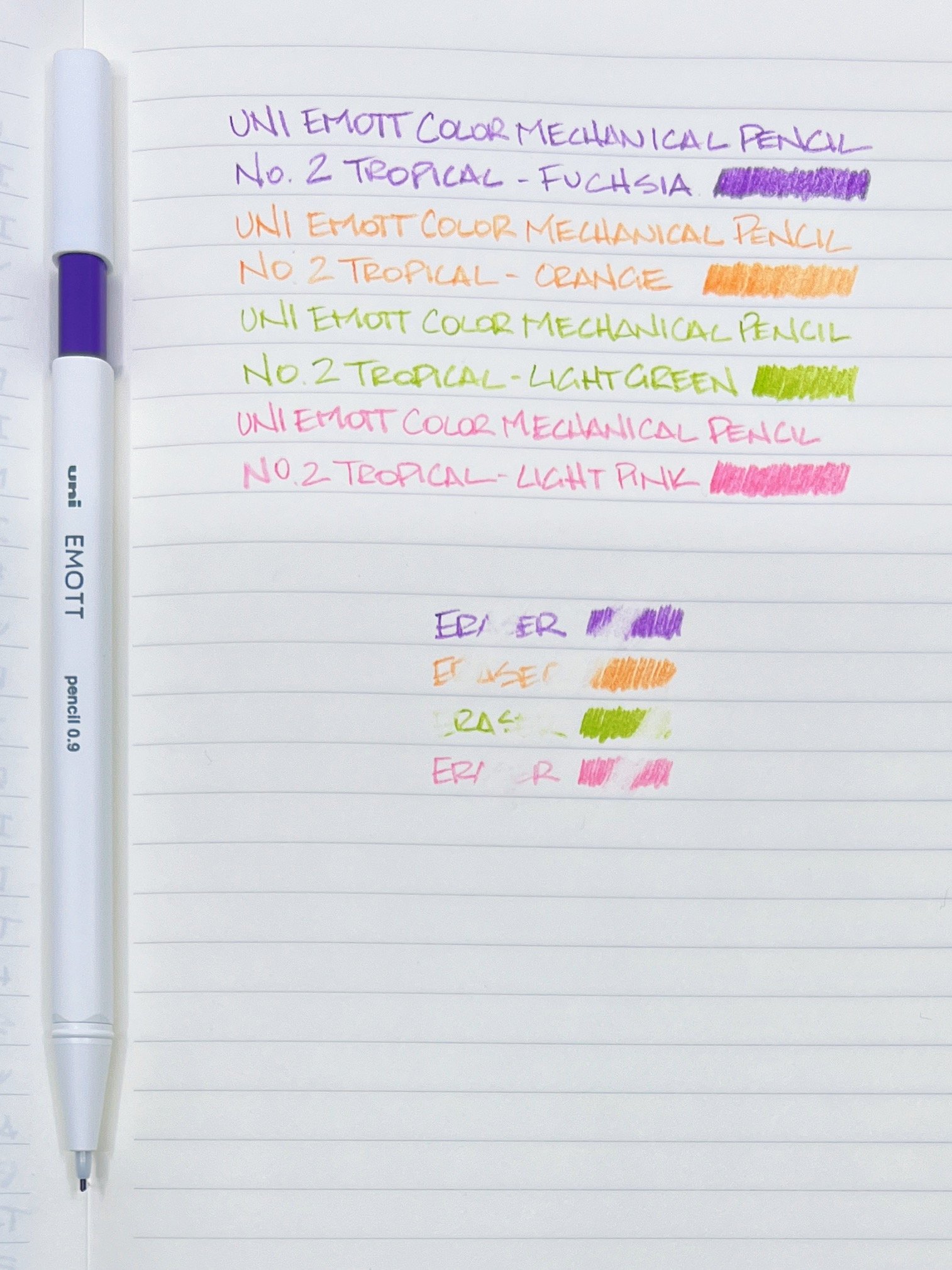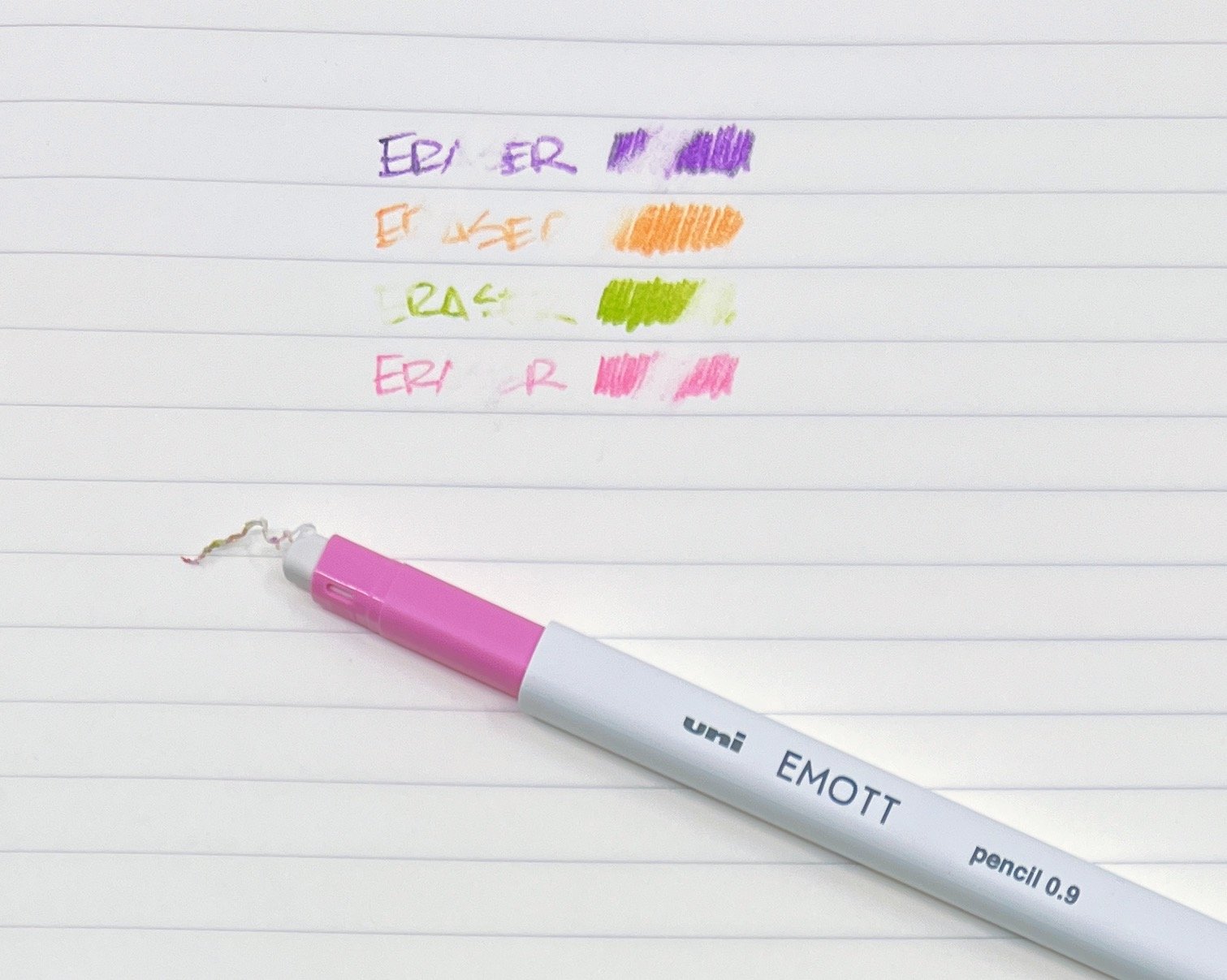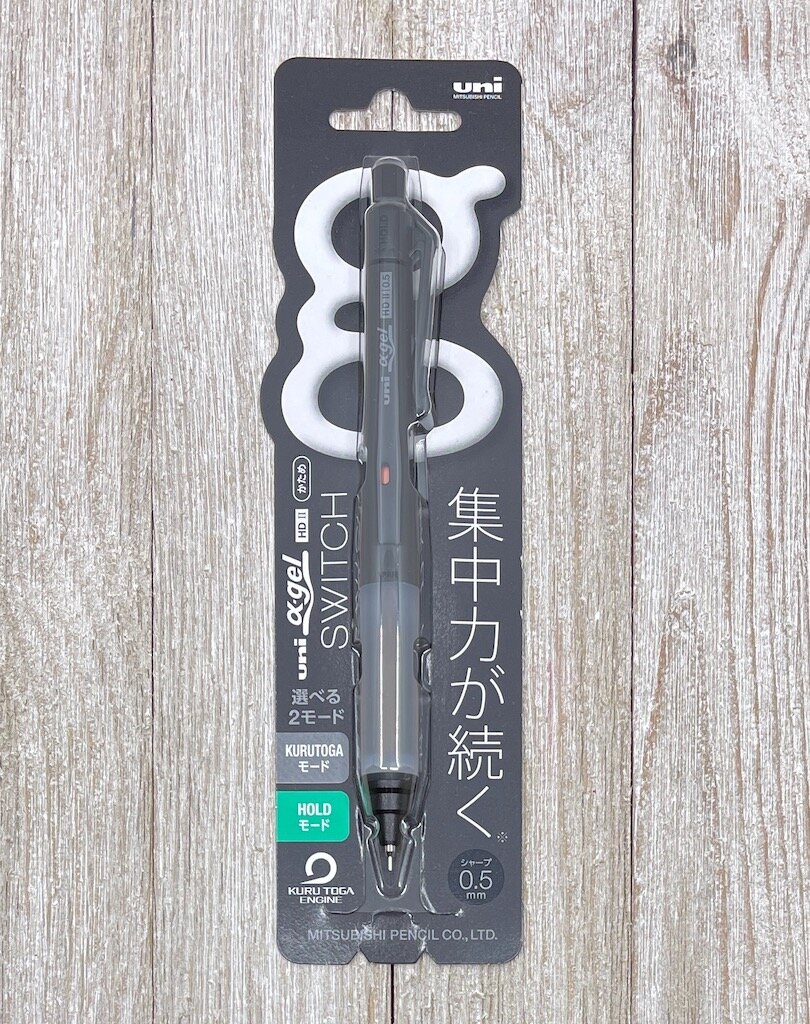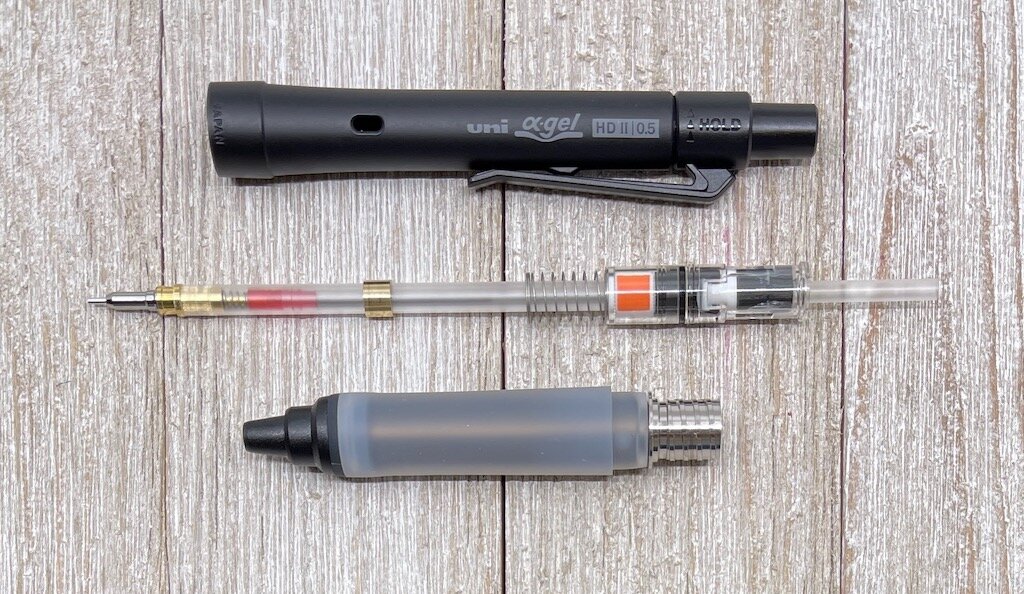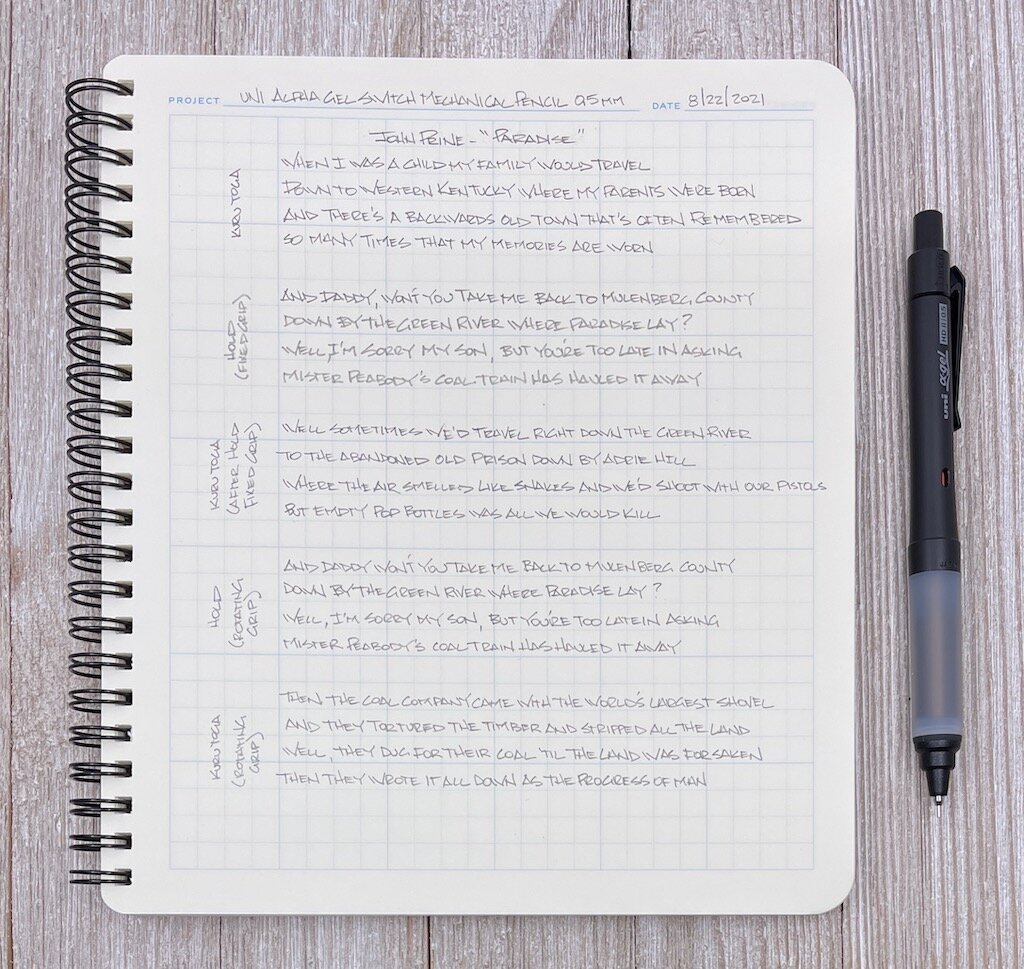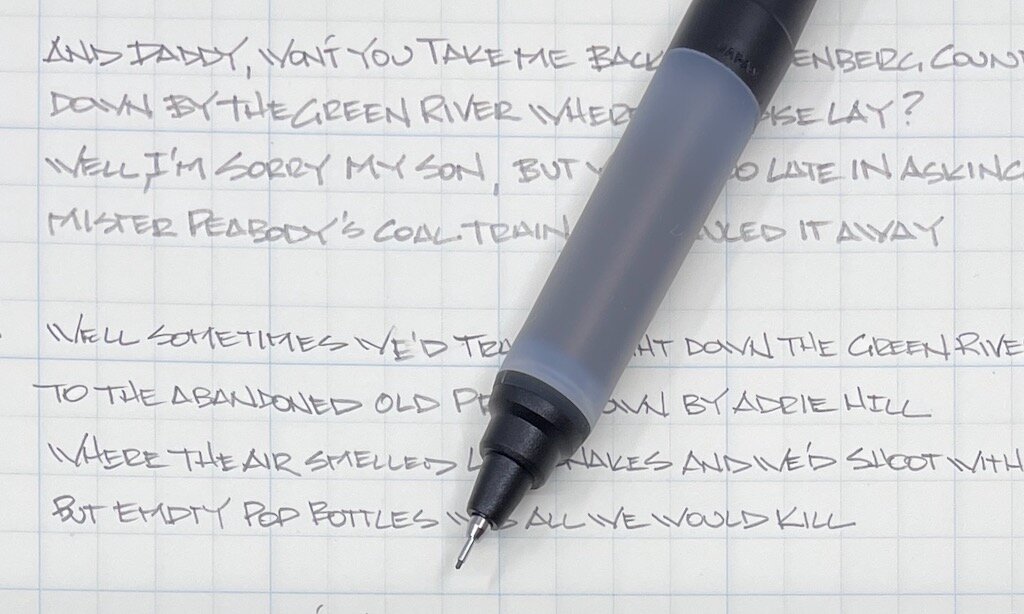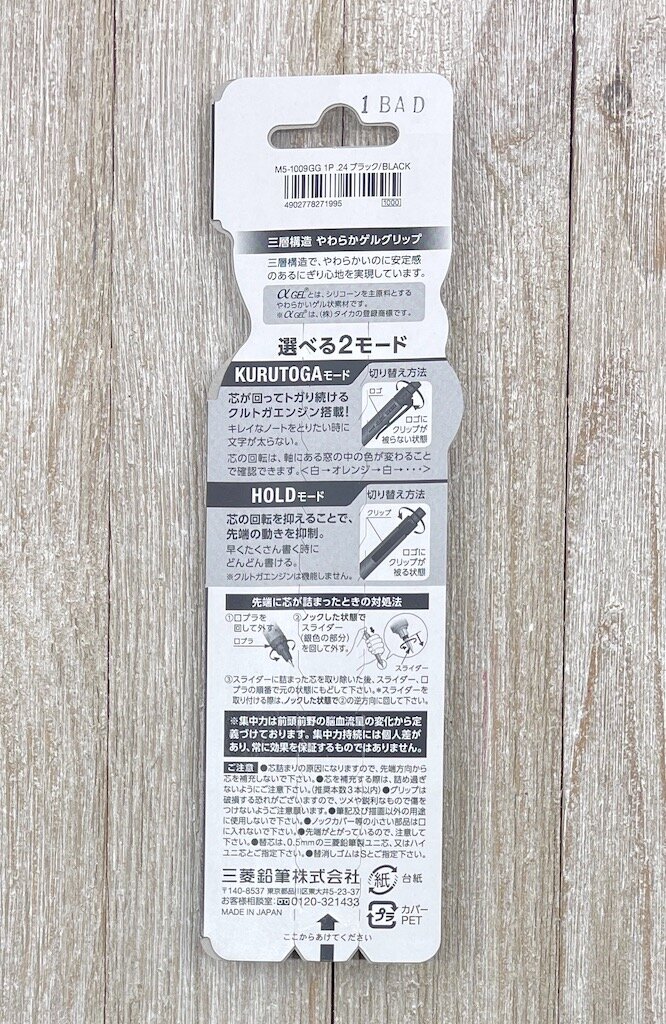My review of the Uni Kuru Toga Dive has been a long time in the making. Why?
- I was hoping they would be more widely available by the time I posted this.
- After several months, I’m still not sure what to make of it.
Jacob, from Fudefan and the Tokyo Inklings Podcast, surprised me with the Dive earlier this year, as he happened to catch them at the right time during their very tiny launch window. While monitoring the launch online, it appears that several Japanese retailers received their store displays and inventory, put the pencils out for sale on February 16th, then POOF! They were all snapped up, and have yet to be available again.
Packaging origami.
What makes the Dive so special that there was a mad rush to buy them, and a continued 4-5x markup of them on the secondary market?
For starters, the Kuru Toga mechanism is one of the few technological advances we have seen in mechanical pencils in decades. Designed to rotate the lead as you write so you always have a sharp, consistent point on the graphite, it offers something no other mechanical pencil manufacturer can. And it works. This is no marketing gimmick, or mindless innovation.
With that under the hood, Uni turned it up to 11 with the rest of the design:
Adjustable length auto-advance lead mechanism? Check.
A cap, with a clip? Check.
A magnetic snap-cap, at that? Check.
No-knock writing when uncapping? Check.
Wait, what did I just say? When you uncap the pencil the graphite is “clicked” forward to your preset writing length based on your auto-advance setting. This means if you have a habit of holding the knock and pressing in the lead when done (to avoid breakage, for example,) when you uncap the pencil the lead resets back to the exposed position. Uncap, and write, no matter the status you left the Dive when previously using.
It’s difficult to explain, but it is due to how the cap, and cap magnet, are designed. You aren’t forcing a click every time you cap an uncap the pencil either. If you cap the pencil with the graphite exposed, it doesn’t come out any longer than where you left it previously. But, if the lead is retracted when storing (capping) the pencil, the next time you uncap it, the lead is ready to write without having to press the knock. In short, the Kuru Toga Dive can be used as a complete no-knock mechanical pencil.
There is a knock on the back of the pencil for you luddites out there, but like how the original Kuru Toga broke us from the habit of rotating the pencil in your hand, the Dive is asking you to never use a knock again.
That’s not the only thing the Dive is asking of you. It is also asking you to spend $50 on a plastic-barrel mechanical pencil. While the metallic blue finish on the Dive is beautiful, don’t let that confuse you into thinking there is aluminum underneath the admittedly cool exterior. The list of high-quality mechanical pencils you can buy for a fraction of that price is too long to list here, even Uni’s own upgraded Kuru Toga models.
But I get it. I get the price, and I get the ask. $50 seems right to me with the litany of design elements and engineering in a single package. And-don’t hate me for this-I think an aluminum barrel Dive in the $80-$100 range would be the sweet spot for what Uni has created here.
The Uni Kuru Toga Dive compared to the Rotring 600 (middle) and Pentel Sharp. Gargantuan.
One detail I haven’t discussed yet is how the Dive feels when writing. It’s good, but I’ll stop there. My biggest hangup is the grip diameter, where at 10.7 mm is much wider than other standard grip sections like the Rotring 600, which checks in at 8.1 mm. That’s not the only oversized part of the pencil-the entire thing is gigantic. Posting the cap, while designed to fit properly, turns the pencil into a plank. I only use it unposted. Due to its size, the Dive may be better suited for an 0.7 mm default lead size, if not 0.9 mm.
In the end, the Uni Kuru Toga Dive is another step up in mechanical pencil technology. I’m just not sure it is a step forward. There is no arguing that it got off to a hot start, in part due to great marketing by Uni, plus the scarcity effect. But is it sustainable? That’s the bigger question I have. I like it. It makes me smile. It’s also $50, and asks me to hold a baton while writing with a needle. I’m glad I have one, but I’ll pick up a more classically designed mechanical pencil-even another Kuru Toga-if I plan on doing real work with graphite in hand.

